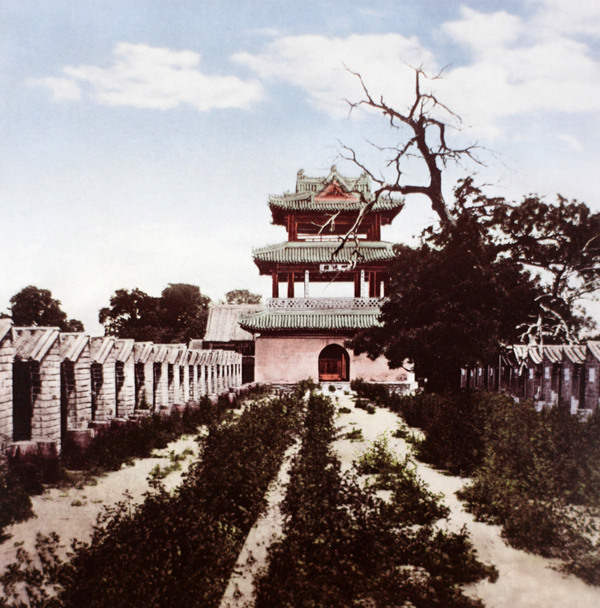


History of Beijing Imperial Examination Hall

The Beijing Imperial Examination Hall fallen into disuse in the late Qing Dynasty Photo: IC PHOTO
Today, most people have little understanding of what “Gong Yuan” represented in its heyday. “Gong Yuan” used to represent the imperial examination hall. During the Ming and Qing dynasties, these halls embodied the dreams and aspirations of countless scholars in ancient China.
Epicenter of imperial examinations
The imperial examination halls, which were specially constructed venues for the imperial examination, were located throughout every province in the country, with the Beijing hall ranking foremost among them. In the eighth lunar month of the “zi,” “wu,” “mao,” and “you” years [corresponding to the years of Rat, Horse, Rabbit, and Rooster respectively], the provincial exams were held here for Zhili [a northern administrative region on the Huabei Plain] and Shuntian Prefecture [an administrative region equivalent to Beijing Municipality]. Every third lunar month in the “chou,” “chen,” “wei,” and “xu” years [corresponding to years of Ox, Dragon, Goat, and Dog], the metropolitan exams were held here. These exams established the Beijing Imperial Examination Hall as the epicenter of imperial examinations in the nation.
Originally constructed in 1415, the Beijing Imperial Examination Hall underwent two expansions in 1438 and 1446. Despite the war and upheaval that marked the transition from the Ming to the Qing dynasties, the hall was spared from destruction. The Qing not only adopted the Ming imperial examination system but also expanded it, allowing the Beijing Imperial Examination Hall to thrive.
The hall was built on the site of the former Ministry of Rites from the Yuan Dynasty. Its walls stood tall, with three layers of enclosure and six lookout towers, reflecting the tense and solemn atmosphere during examinations. The structure faced south, and featured five main gates. Inside, an ancient locust tree, planted during the Yuan Dynasty and known as “Wenchang,” stood as a testament to the site’s long history. At its peak during the late Qing era, the complex contained 114 rows of exam cubicles, totaling over 9,000 rooms. These cubicles served as examination spaces during the day and overnight accommodations for candidates, with each student occupying one cubicle.
In 1900, the Eight-Power Allied Forces stormed Beijing, plundering the hall and leaving it in ruins. It wasn’t until 1903 that the imperial exams were reinstated, but they had to be held in another hall. This was a challenging time for the country, which teetered on the brink of collapse, with the intellectual tradition dimming like a flickering candle. Shortly after, calls for the abolition of the imperial examination grew louder, leading the Qing Court to decree its permanent end in 1905. Thus, the thousand-year-old tradition of imperial examinations came to an abrupt end, and the halls were abandoned, gradually fading from public memory.
Reconstruction in modern times
In the early years of the Republic of China, the government, preoccupied with rebuilding the nation, could not commit resources to the Beijing Imperial Examination Hall. In the late 1930s, when Beijing fell under Japanese occupation, the invaders constructed a “Shinto shrine” on the site to enshrine the dead, desecrating this humane site of Chinese culture. To facilitate access, they opened a gate to the southeast of the “shrine” and named it “Qiming Gate.” In 1945, after China’s victory in the war of resistance against Japanese aggression, the gate was renamed “Jianguo Gate,” and the so-called shrine was demolished. Some of the remaining buildings were later used as dormitories for the National Art School in Beiping, restoring some scholarly atmosphere to the site.
After the founding of the People’s Republic of China, the Department of Philosophy and Social Sciences of the Chinese Academy of Sciences was established at this site, later evolving into the Chinese Academy of Social Sciences (CASS) in 1977. Since then, the CASS headquarter buildings were erected on the site of the former Beijing Imperial Examination Hall.
Di Yongjun is a research fellow from the Institute of Ethnology and Anthropology at CASS.
Copyright©2023 CSSN All Rights Reserved